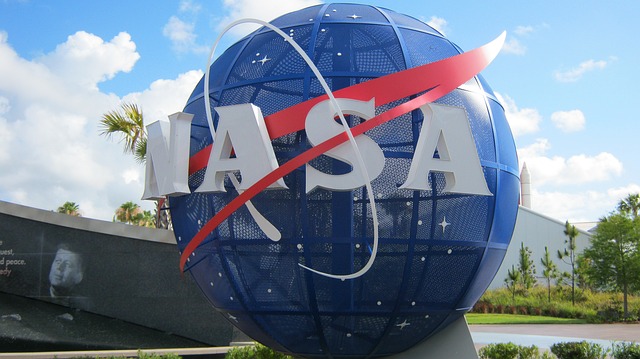We stand on the precipice of cosmic discovery, poised to unravel the profound mysteries that lie hidden within the vast expanse of the universe. For decades, NASA’s Explorers Program has been our steadfast companion in this thrilling quest, launching a multitude of low-cost scientific missions that have revolutionized our understanding of the cosmos. Through these endeavors, we have gained unprecedented insights into the celestial dance of black holes, the explosive drama of supernovas, and the origins of our universe.
[ez-toc]
The NASA Explorers Program embodies a spirit of innovation and ingenuity, embracing the boundless potential of scientific exploration. It is a testament to the remarkable human capacity to probe the unknown and push the boundaries of our understanding. With every mission, this program ignites a beacon of inspiration, reminding us that the universe is a treasure trove of wonder, waiting to be unveiled.
“The universe is not hostile, nor yet is it friendly. It is simply indifferent.”
A Legacy of Scientific Triumphs
The NASA Explorers Program, established in 1958, is NASA’s longest-running scientific endeavor, a testament to its enduring commitment to pushing the frontiers of knowledge. This program has birthed over 90 successful missions, each meticulously designed to address critical scientific questions, and to unveil the universe’s secrets. The program’s legacy is adorned with a constellation of groundbreaking discoveries, including the revelation of the first evidence for the existence of black holes, the mapping of the cosmic microwave background radiation, and the detection of gamma-ray bursts, the most powerful explosions in the universe. The NASA Explorers Program has not only advanced our understanding of the cosmos, but it has also yielded numerous technological innovations that have revolutionized our ability to explore the universe. These missions have spearheaded the development of advanced imaging techniques, novel spacecraft designs, and cutting-edge instrumentation, paving the way for future space exploration endeavors.
The Explorers Program: A Paradigm Shift in Space Exploration
The NASA Explorers Program stands apart from other NASA missions in its remarkable ability to achieve groundbreaking scientific results with a lean budget. This program embraces a philosophy of cost-effectiveness and efficiency, utilizing innovative technologies and streamlining mission design to maximize scientific return. By focusing on specific scientific objectives, the Explorers Program allows researchers to delve deep into their areas of expertise, making significant contributions to our understanding of the cosmos. This approach has allowed the program to launch a diverse array of missions, ranging from studying the Sun’s atmosphere to mapping the distribution of dark matter. The NASA Explorers Program has also been a catalyst for fostering scientific collaboration, bringing together researchers from diverse disciplines to work towards common goals. This spirit of collaboration has fostered a vibrant scientific community, where ideas are shared, knowledge is disseminated, and discoveries are celebrated.
We also Published
- Questioning Common Medical Practices: More Harm Than Good?
Questioning Common Medical Practices: such as how common medical practices like thickening liquids for dementia patients and stopping blood pressure medications before surgery may not be as beneficial as previously thought. Explore the conflicting evidence surrounding spinal cord stimulators for chronic pain. - Additive Inverse of an Element: Understanding the Concept
Learn about the additive inverse of an element, how to find it, and its importance in mathematics. - The Root System in Plants – A Detailed Analysis
Explore the comprehensive details of the root system in plants, essential for plant biology.
Exploring the Frontiers of the Cosmos: The Latest Mission Proposals
The NASA Explorers Program continues to blaze a trail of innovation, with two new mission concepts, the Advanced X-ray Imaging Satellite and the Probe far-Infrared Mission for Astrophysics, vying for selection. These proposed missions hold the promise of revolutionizing our understanding of the universe, and they exemplify the program’s unwavering commitment to scientific progress. The Advanced X-ray Imaging Satellite is poised to be a game-changer in our quest to understand the evolution and behavior of supermassive black holes, the enigmatic objects that reside at the heart of galaxies. This powerful X-ray observatory would equip scientists with unprecedented capabilities to explore the interplay between these behemoths and the surrounding galactic environment, potentially shedding light on the enigmatic forces that shape galaxies.
The Advanced X-ray Imaging Satellite: A Window into the Heart of Galaxies
The Advanced X-ray Imaging Satellite would serve as a next-generation X-ray observatory, building upon the legacy of missions like Chandra and Swift, to probe the universe in unprecedented detail. Its advanced imaging capabilities would enable scientists to study the intricate interplay between supermassive black holes and the surrounding galactic gas, providing invaluable insights into the evolution of galaxies. This satellite would also be ideally suited to study the elusive phenomena of gravitational waves, ripples in the fabric of spacetime generated by the cataclysmic collisions of black holes and neutron stars. By studying these cosmic ripples, scientists hope to unlock the secrets of gravity and the very nature of spacetime. The Advanced X-ray Imaging Satellite promises to be a beacon of innovation, propelling us closer to unraveling the mysteries of supermassive black holes and the evolution of galaxies.
The Probe far-Infrared Mission for Astrophysics: Unveiling the Secrets of the Early Universe
The Probe far-Infrared Mission for Astrophysics is another exciting proposal that has the potential to transform our understanding of the cosmos. This mission, featuring a 5.9-foot telescope, would embark on a journey to explore the universe at far-infrared wavelengths, a region of the electromagnetic spectrum that is teeming with cosmic secrets. By peering into this unexplored realm, scientists hope to glean new insights into the formation of planets and stars, the evolution of galaxies, and the composition of the early universe. The Probe far-Infrared Mission would build upon the groundbreaking observations made by the James Webb Space Telescope and various radio telescopes, offering a unique perspective on the cosmos. This mission would contribute significantly to our understanding of the universe’s evolution, providing crucial data to unravel the mysteries of star formation, galaxy growth, and the early universe.
A Testament to Human Ingenuity: The Explorers Program’s Enduring Legacy
The NASA Explorers Program stands as a testament to human ingenuity and the indomitable spirit of exploration. This program, with its unwavering commitment to scientific discovery, has consistently delivered groundbreaking breakthroughs, shaping our understanding of the universe. The latest mission proposals, the Advanced X-ray Imaging Satellite and the Probe far-Infrared Mission for Astrophysics, exemplify the program’s enduring legacy of innovation and its unwavering dedication to pushing the boundaries of knowledge. These missions hold the promise of unraveling the mysteries of the universe, revealing the secrets of black holes, supernovas, and the evolution of galaxies. The NASA Explorers Program reminds us of the boundless potential of scientific exploration and the remarkable power of human curiosity. It is a beacon of inspiration, reminding us that the universe is a vast and enigmatic realm that is ripe for discovery. As we continue to explore the cosmos, the NASA Explorers Program will undoubtedly play a pivotal role in shaping our understanding of the universe and our place within it. What will the next generation of Explorers Program missions reveal? The universe holds the answers, and we are ready to listen.
RESOURCES
- Space Explorers – Florida Space Grant Consortium
- NASA selects two Astrophysics Missions to study X-ray and …
- NASA Explorers
- 2022 Heliophysics Small Explorers AO and MO – NASA
- NASA Announces Shortlisted Mission Proposals For …
- SOMA Program Acquisitions: Astrophysics MIDEX 2021 Explorer
- Small Explorer program
- NASA selects two mission proposals for new astrophysics …
- NASA announces Probe Explorers program, selects and …
- NASA’s Explorer Program: An Overlooked Success
- Flight Programs








0 Comments